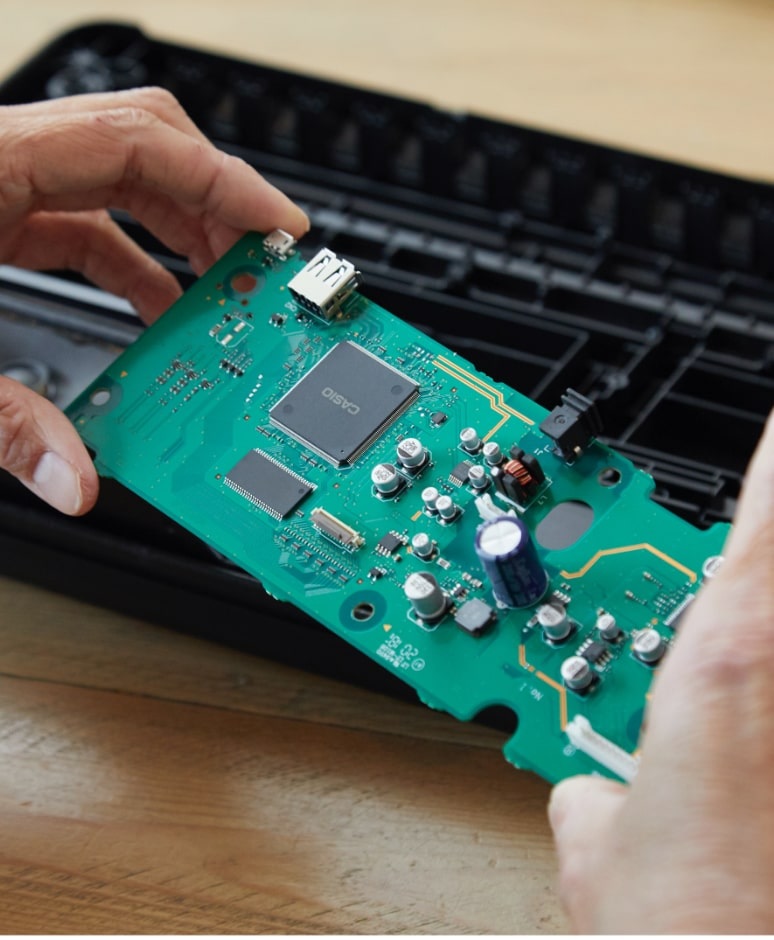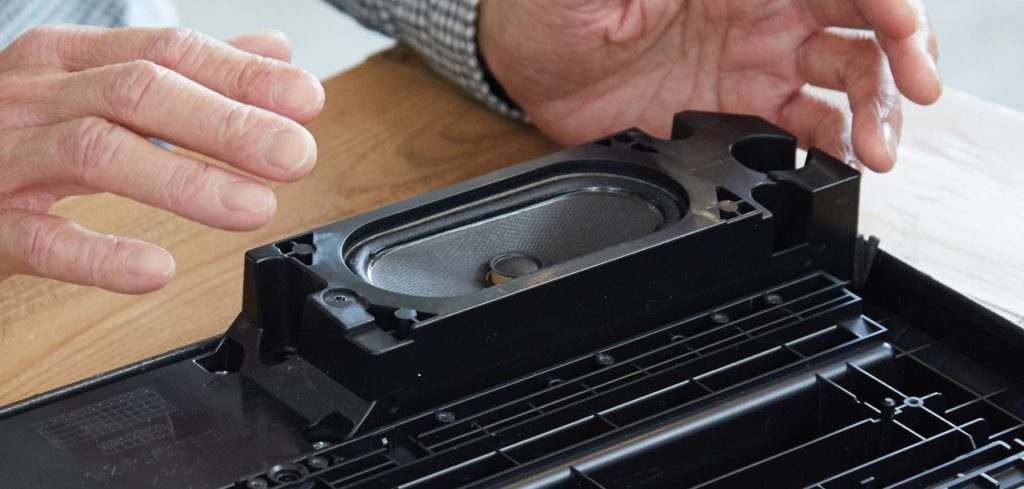Casio CT-S1000V
Casio have announced the new CT-S1000V keyboard with vocal synthesis:
- 61 full-size touch response keys plus pitch bend wheel
- 64 voice polyphony
- 3 assignable knobs for controlling modulation, effects, filters, and more
- 800 AiX-powered Tones and 243 full accompaniment Rhythms
- Advanced Tones (including vintage keyboards
- Editable DSP effects (100 effects)
- Split and layer (Upper 1/2, Lower 1)
- Powerful bass-reflex stereo speaker system with surround effect
- Two 13cm by 6cm speakers, 2.5W per channel
- Audio sampler and 6-track MIDI recorder (sequencer)
- Audio sample format: WAV, 44kHz, 16-bit, stereo
- Vocal synthesis with personalized lyrics via the free Lyric Creator app
- Vocal format: 44kHz, 16-bit, mono
- Bright backlit LCD display with easy, intuitive interface
- Strap pins for playing anywhere
- 1/4″ line outputs to connect to mixers, PA systems, etc.
- Class-compliant USB-MIDI connects to the free Casio Music Space iOS/Android app
- Includes WU-BT01 Bluetooth MIDI/Audio adapter
- Optional 6xAA battery power (AC adapter and music rest included)
- Weight: 10 pounds
- $449.99 USD (street)

Quoting the Casio web site:
The CT-S1000V does what no other keyboard can do: Speak or type your lyrics into the free Lyric Creator app for iOS/Android, transfer them to the CT-S1000V, and play the keys to hear your words come alive. Choose from multiple vocalist models, and adjust age, vibrato, portamento and other parameters in real time. It can produce choirs, robotic sounds, vocoder-like textures, and more. You can even create a custom vocalist based on an audio recording.
Availability — “Coming soon”.
Please see my pre-announcement post for more pictures and information. I also have posted a list of recent Casio patents related to sound synthesis and vocal synthesis.
Vocal Synthesis
According to Casio, you can create lyrics using their tablet-/phone-based Lyric Creator app, transfer them to the CT-S1000V, and play them using the keys. You can dynamically change characteristics like age, gender, portamento and vibrato in real time. Of course, you can mangle the sound with DSP effects, too. The front panel knobs are assignable for real time control.
NOTE mode chooses how the lyrics play-back when keys are pressed. You can play a word or syllable with each key press or you can play choral harmonies. PHRASE mode follows your timing. Legato gestures change note (pitch) while the phrase is playing. You can also select a syllable with your left hand and use your right hand to play it.

Lyric Creator lets you edit, save and share lyrics. Lyrics can be imported from MusicXML files.
Casio CT-S500
Casio have announced the new CT-S500:
- 61 full-size touch response keys plus pitch bend wheel
- 64 voice polyphony
- 3 assignable knobs for controlling modulation, effects, filters, and more
- Editable DSP effects (100 effects)
- Audio sampler and 6-track MIDI recorder (sequencer)
- 1/4″ line outputs to connect to mixers, PA systems, etc.
- Includes WU-BT01 Bluetooth MIDI/Audio adapter
- Bright backlit LCD display with easy, intuitive interface
- 800 AiX-powered Tones and 243 full accompaniment Rhythms
- Advanced Tones (including vintage keyboards)
- Splits and layers (Upper 1/2, Lower 1)
- Powerful bass-reflex stereo speaker system with surround effect
- Two 13cm by 6cm speakers, 2.5W per channel
- Strap pins for playing anywhere
- Class-compliant USB-MIDI connects to the free Casio Music Space iOS/Android app
- Optional 6xAA battery power (AC adapter and music rest included)
- 10 pounds (4.7kg)
- $379.99 USD (street)
Available now!

Quick reaction
Watching the Casio release video stream, the artist demonstrations are exciting. At these price points, Casio are going to sell a ton of these. I am so glad they included the “Advanced Tones”, that is, all the pianos, vintage keys and other instruments which created so much interest in the CT-S1. Hope they slash street prices on the CT-X series because the new S-series models blow them away.
Copyright © 2022 Paul J. Drongowski


